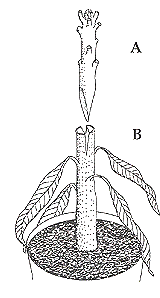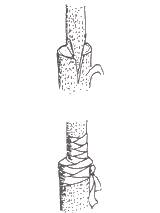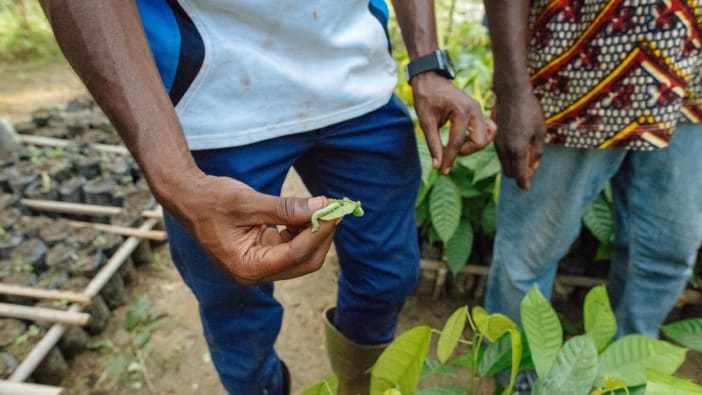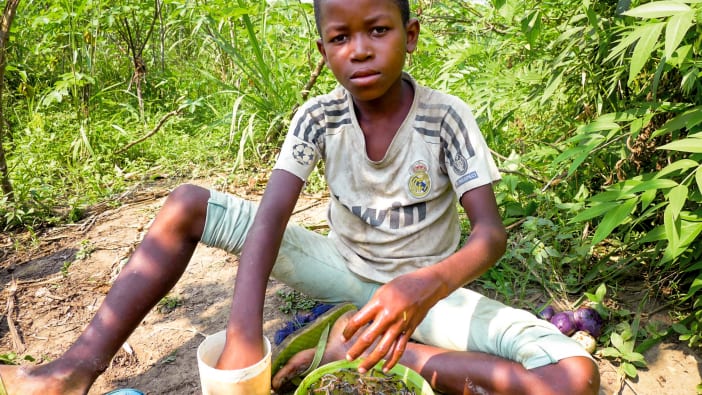By Mike and Isabel Carter.
In Footsteps No. 5 the advantages of bud grafting citrus trees were discussed. These include:
- Reduced height for easy picking.
- Good quality fruit from selected varieties
- Early fruiting after only a few years.
However, with other kinds of fruit trees it can be difficult to achieve successful bud grafts.
There is another method of grafting which you can try on trees such as mangoes and avocados, which will bring the same benefits. It is know as cleft grafting. (You should always try bud grafting first, since even if it fails, less damage is done to the seedling tree.)
Raising rootstocks
Choose healthy seeds from trees which grow well in your area. Pick fruit from the tree rather than from off the ground. Both mango and avocado seed should be fresh and not dried. Mango seed can be placed in a bucket first – poor seeds will float and can be thrown away. Plant seed in large plastic tree bags or tins with holes in the base.
Allow a single stem to grow for six to eight months. When it is as thick as your little finger, it is ready for cleft grafting. (As you become more skilled you can try grafting younger seedlings).











